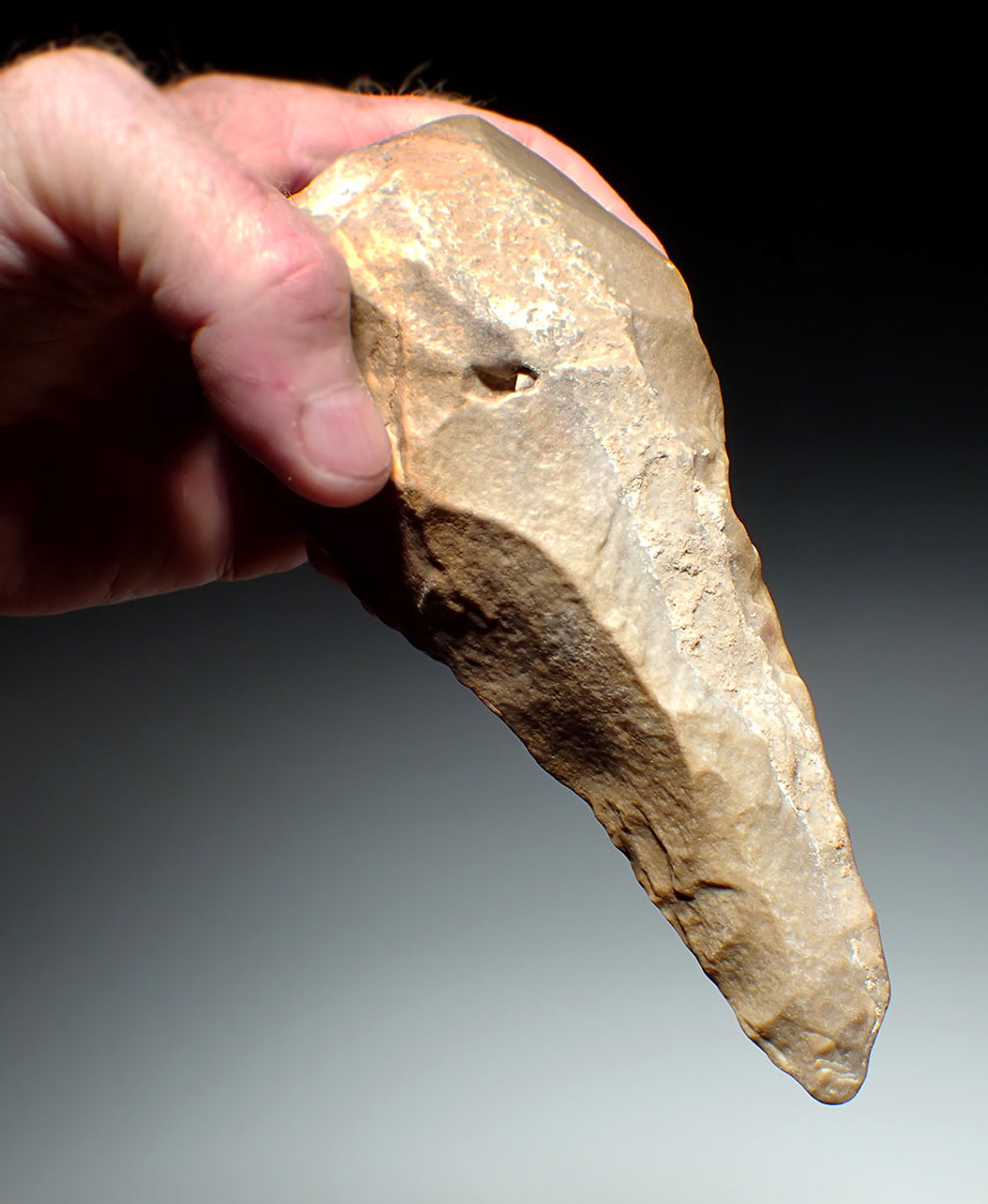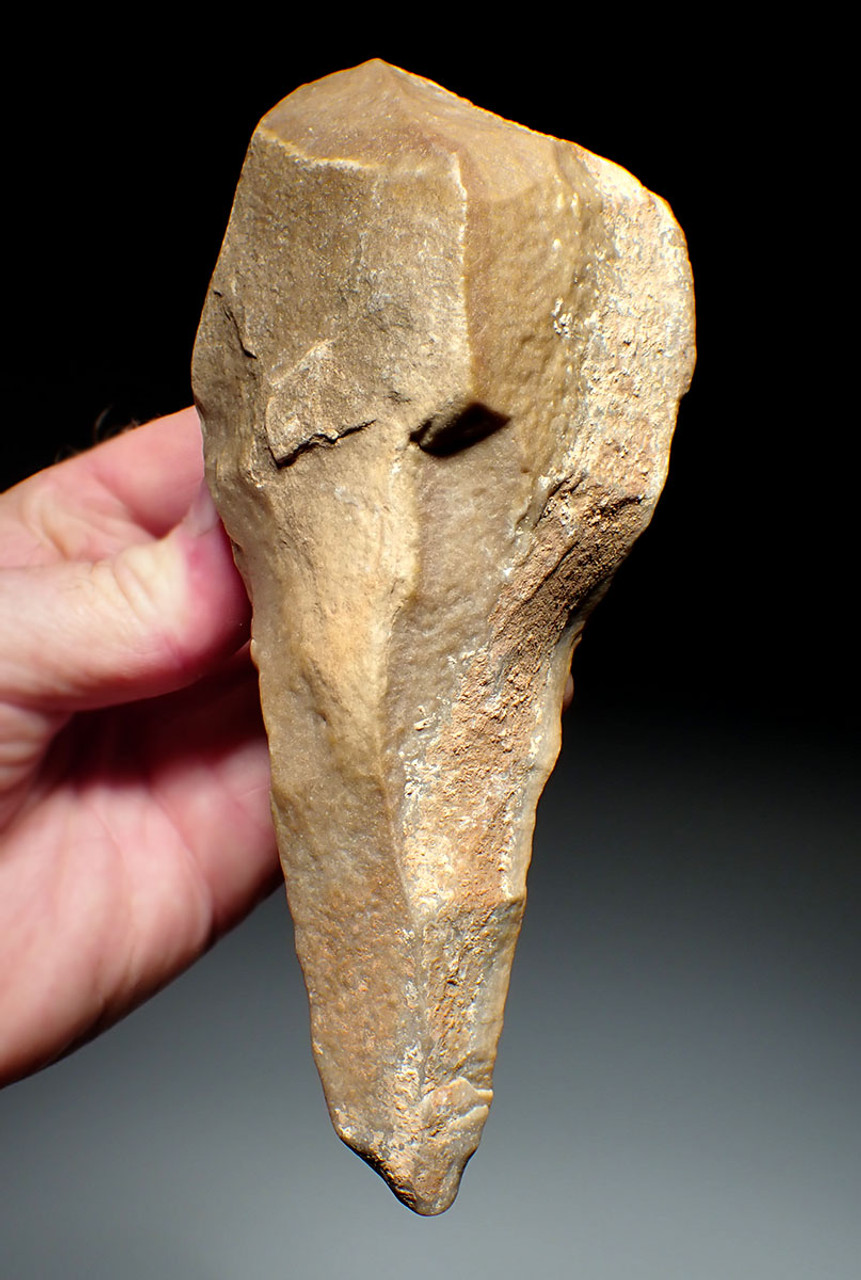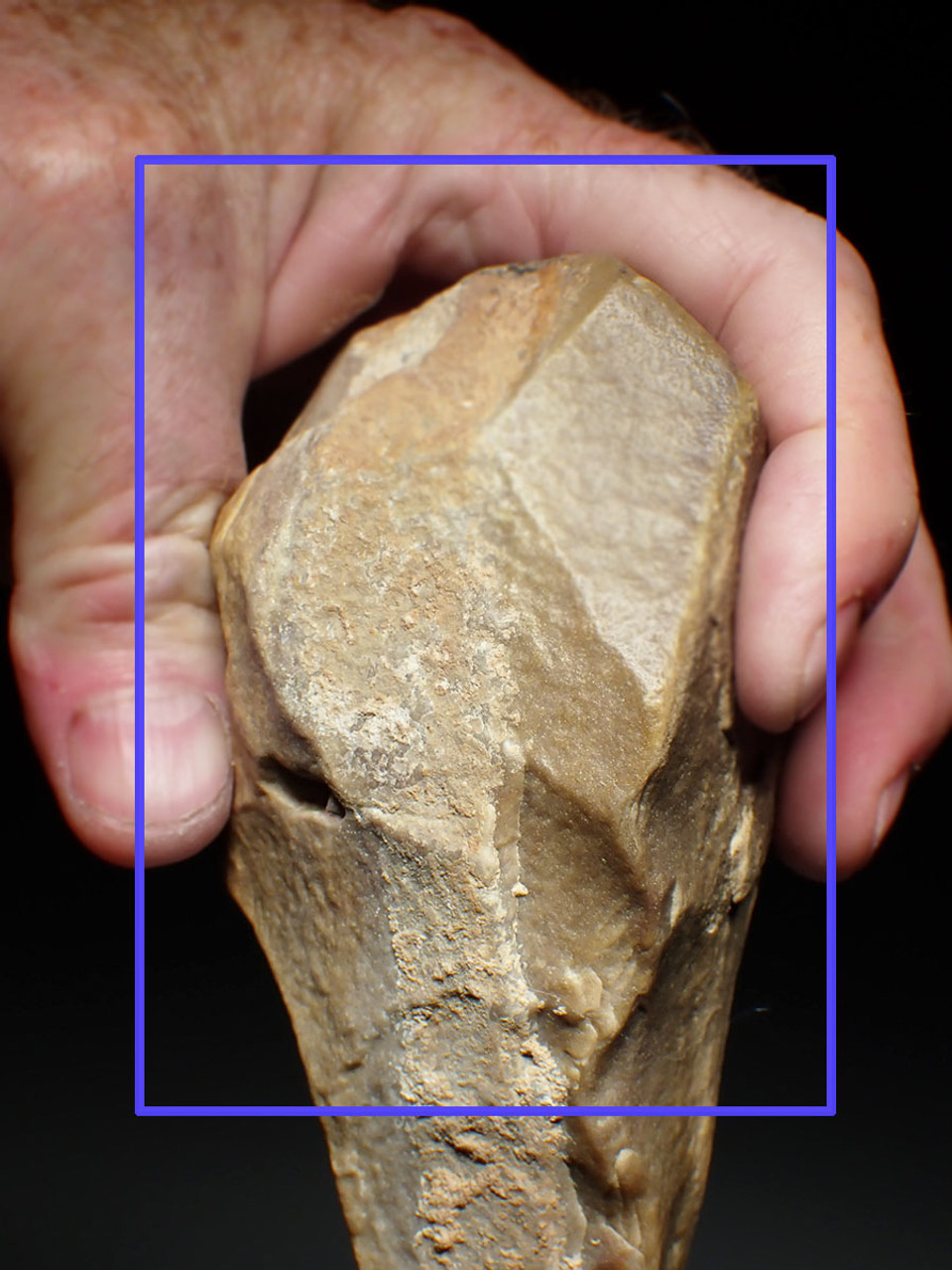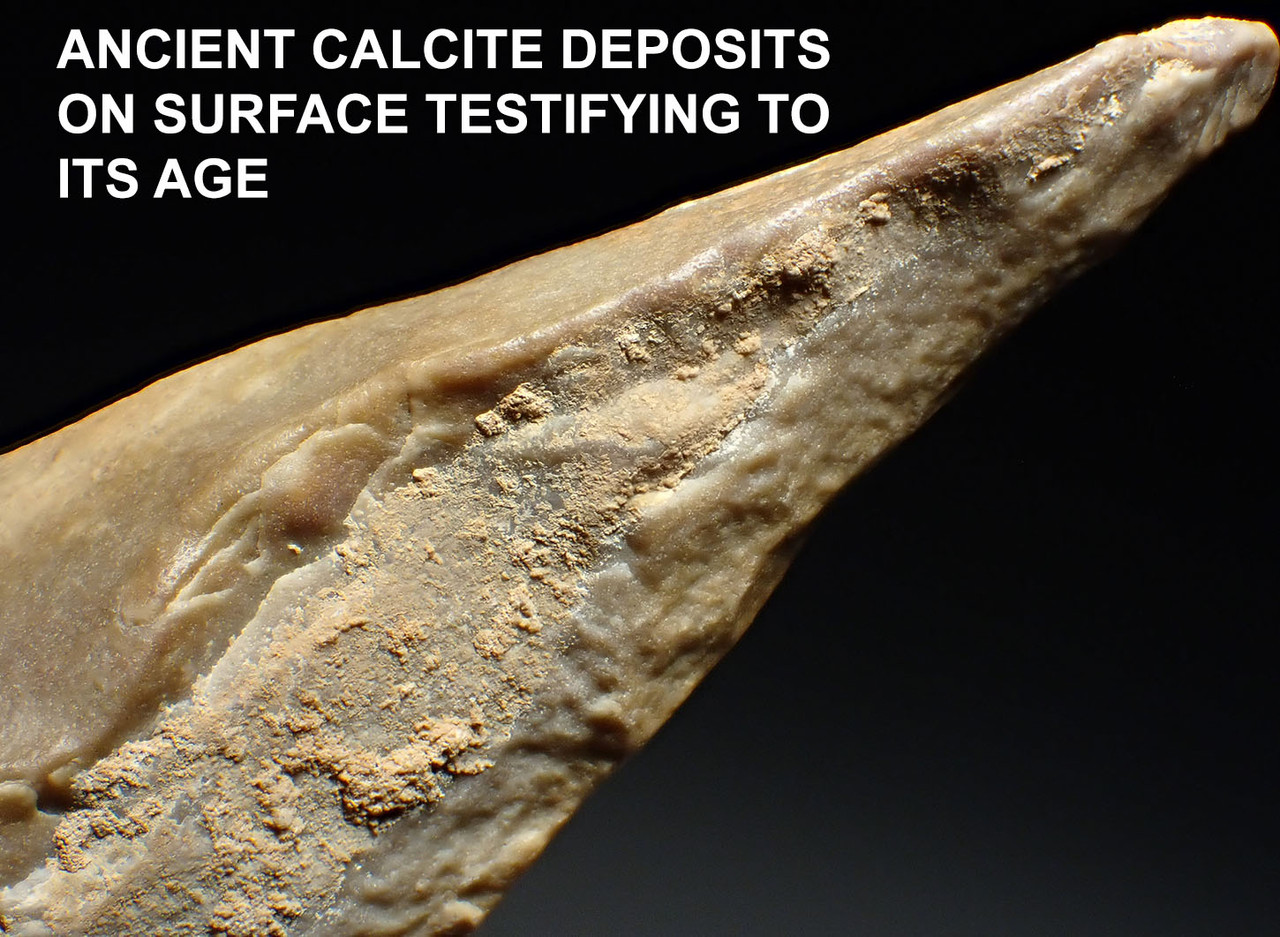Product Description
SEE MORE ACHEULEAN STONE AGE TOOLS
This genuine stone prehistoric hand axe was made and used by early humans of the species Homo erectus (ergaster). It was surface-collected from an exposed Lower Paleolithic Acheulean site in the Sahara Desert of Northwest Africa. Lower Paleolithic hand axes such as this, are the first scientifically documented intelligent design tool in human developmental history. Prior to these Saharan Acheulean hand axes, only crude pebble and flake tools existed in the human fossil record.
This FINEST, INVESTMENT-CLASS quartzite hand axe is a rare QUADRAHEDRAL PICK. Similar to a trihedral pick but with four faces on the tip body instead of the more common three, the elongated form features a rare four-sided lower body and point. A hand axe such as this would have been best suited for puncturing tasks - perhaps to open the bones of large hunted game animals to get to the nourishing, prized marrow inside. The workmanship on this axe is of the finest we have offered - masterfully executed by an extremely skilled prehistoric Homo ergaster tool maker. Tip and edges are intact with remarkable detail in the flaking on the edges. The exceptional condition has preserved such fine ancient handcraft, making this an especially desirable investment collection specimen!
The surface shows a rich patina and "desert varnish", a natural glossy surface caused by the exposure of the stone to the blowing sands over hundreds of thousands of years. Original sediment and mineral encrustations are still present in microscopic crevices and cracks - a trait ONLY found in authentic Paleolithic artifacts.
At this period in North African prehistory, large animals such as ancient giraffe, bison and elephants would have thrived in a temperate floodplain and open savanna before prehistoric global warming turned the region into the now, inhospitable Sahara Desert. Butchering these large hunted animals would have require specialized tools such as this rare example.
 US DOLLAR
US DOLLAR
 EURO
EURO
 AUSTRALIAN DOLLAR
AUSTRALIAN DOLLAR
 CANADIAN DOLLAR
CANADIAN DOLLAR
 POUND STERLING
POUND STERLING






























